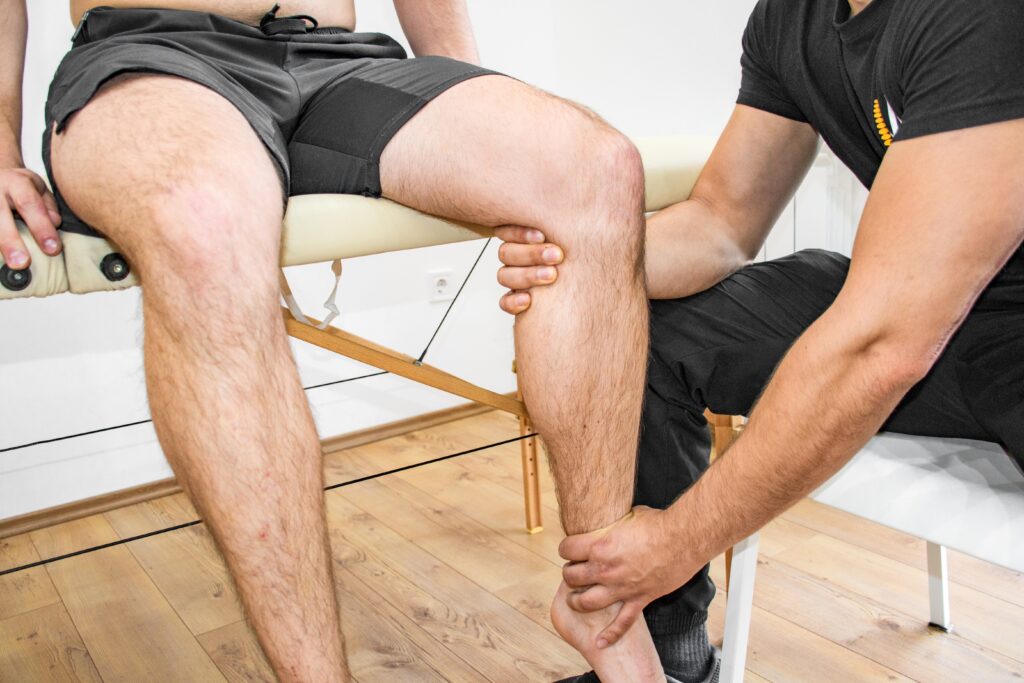Physical therapists offer many options to treat balance problems, based on each person’s needs. They evaluate many systems of the body, including:
- Muscles and joints.
- The inner ear.
- Eye tracking ability.
- Skin sensation.
- Proprioception (position awareness in the joints).
- Circulation.

Physical therapists are movement experts who prescribe active movement techniques and physical exercise to improve these systems. Exercises may include those for:
- Strengthening.
- Stretching.
- Position awareness.
- Visual tracking.
- Inner ear retraining.
Your physical therapist can identify, diagnose, and help treat your balance problems by identifying their causes. They will design a treatment program specific to your needs, challenges, and goals. They also will provide you with exercises you can do at home. Your treatment plan may include strategies to:
Reduce falls risk. Your physical therapist will assess problem footwear and hazards in your home that increase your risk of balance problems or falling. Hazards can include loose rugs, poor lighting, pets under foot, or other obstacles.
Reduce the fear of falling. By addressing specific problems that are found during your examination, your physical therapist will help you regain confidence in your balance. They will help you improve your ability to move freely and do daily activities. As you build confidence in your balance and physical ability, you will be better able to enjoy everyday activities.
Improve mobility. Your physical therapist will help you regain the ability to move around with more ease, coordination, and confidence. They will develop a personalized treatment and exercise program to gradually build your strength and movement skills.
Improve balance. Your physical therapist will teach you exercises for both static balance (sitting or standing still) and dynamic balance (keeping your balance while moving and doing daily activities). They also may work with you on exercises to improve your ability to react to a balance disturbance to prevent a fall. They will increase these exercises gradually as your skills improve to help you progress.
Improve strength. Your physical therapist will teach you exercises to address muscle weakness, or to improve your overall muscle strength. Strengthening muscles in the trunk, hip, and stomach (core) can be especially important to improve balance. They may use exercise bands for resistance training to improve your strength and avoid joint stress.
Improve movement. Your physical therapist will choose specific activities and treatments to help restore normal movement in any stiff joints. These might begin with passive motions that the physical therapist does for you, and progress to active exercises that you do yourself.
Improve flexibility and posture. Your physical therapist will determine if any of your major muscles are tight. They will teach you how to gently stretch them. Your physical therapist also will assess your posture, and teach you exercises to improve your ability to keep a proper posture. Good posture can improve your balance.
Increase activity levels. Your physical therapist will discuss activity goals with you. They will design an exercise program to address your specific needs and goals. Your physical therapist will help you reach those goals in the safest, fastest, and most effective way possible.
Once your treatment course is completed, your physical therapist may recommend that you move to a community program to continue your balance exercises and get help to fall-proof your home. Hospitals, senior centers, and volunteer groups host such community programs.
Your physical therapist may recommend that you consult with other health care providers, including:
- An eye doctor, to check your current vision needs.
- An ear doctor, to check your outer and inner ears.
- Your primary care doctor, to review your current medicines to see if any of them may be affecting your balance.












